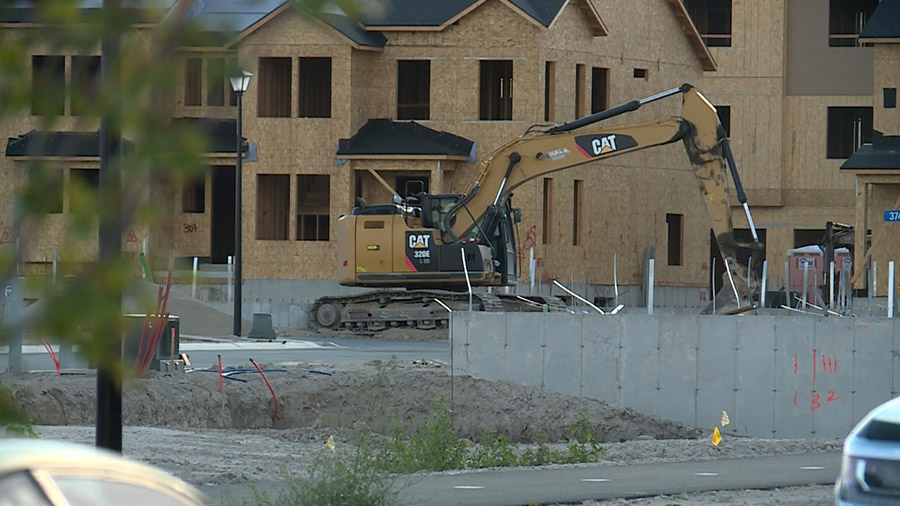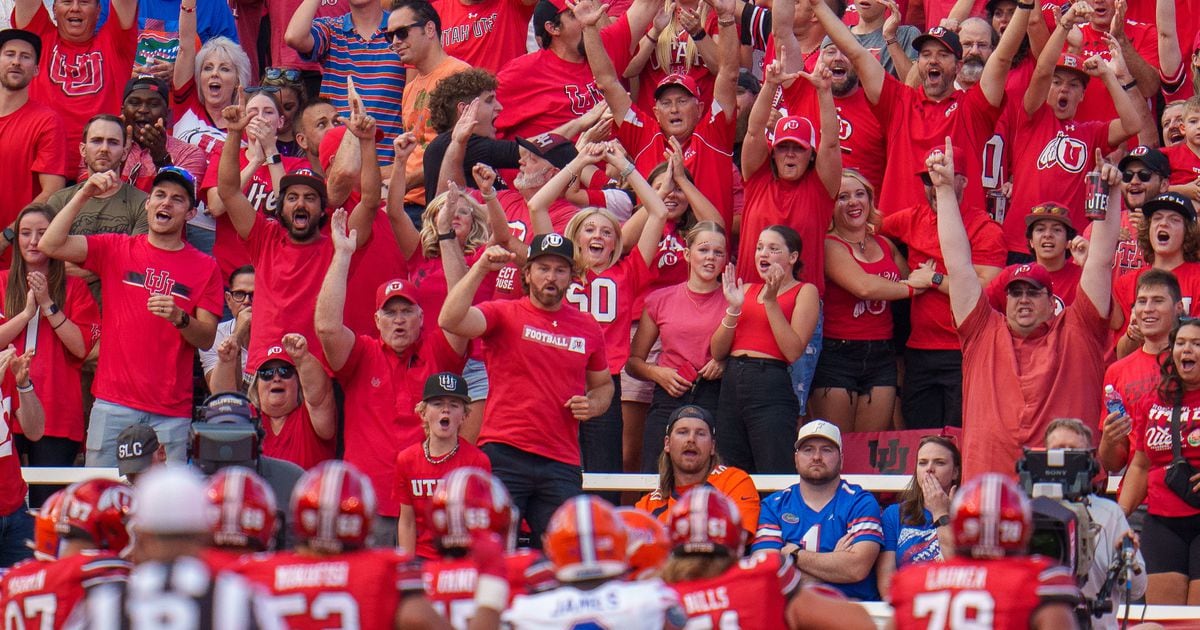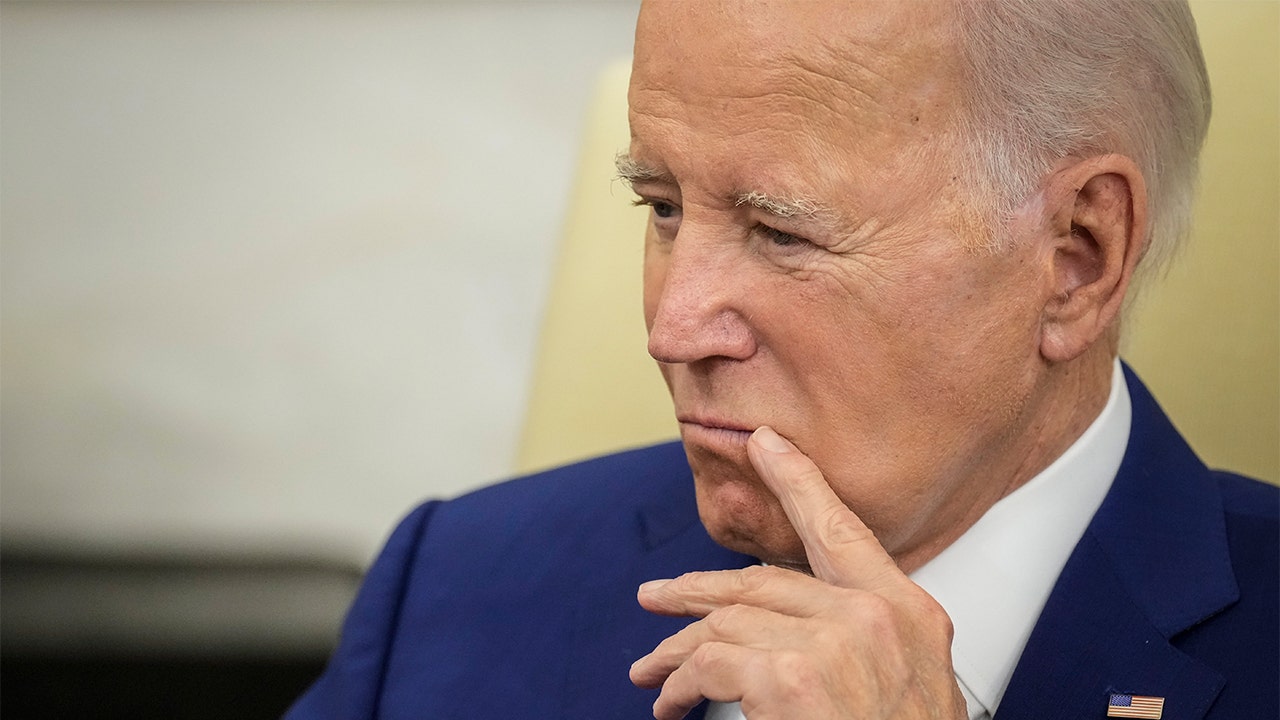Are you ready for this, Utah and BYU and Utah State fans? Get ready. Your rooting world is about to be nudged off its axis.
And it will be OK — for some of you. Not all, some.
College sports is on the verge of transforming into something that could be more than a little off-putting to many college fans. Question is: Are you one of them?
The evidence of revolutionary change was all around, as the NCAA moved toward a multibillion-dollar settlement this week — from possible private equity involvement in athletic departments to revenue-sharing with college athletes, those athletes essentially becoming university employees, to backpay for past athletes being handed out to big contracts being offered and signed and sometimes allegedly reneged on by the powers that be, the powers you’re accustomed to cheering for.
Bottom line is, college sports will one day be professional sports.
And now athletic departments are looking for money to counter added expenses they’ll face on account of wanting to stay competitive while being made legally to share proceeds with athletes, as well as other costs of competition.
Private equity partnership is being explored by some schools, where firms would pour millions of dollars into athletic departments as a means of investment, and be rewarded with payouts from money gained by those departments in the years ahead. This has been whispered about for a long time, but some administrators, needing more revenue to remain competitive for the aforementioned reasons, reportedly are seriously considering this idea. Such investment makes you wonder how much say those firms would have in overall direction of individual teams inside departments, in decision-making, etc.
Think of it like this: If the University of Utah partnered with a private equity outfit that offered to throw $150 million at Utah sports, and the Utes used that money to offset, say, sharing revenue and other expenses, say, paying coaches’ salaries, would that firm then have influence over who was hired for what position or who was fired?
Already mega-boosters are waist-deep in donating money at many schools. What kind of sway do they hold over department decisions? Would private equity investment make matters better or worse? In football, would it possibly balance out an annual competitive chase for league and national titles that currently rests at the same familiar 10 to 15 teams, inflating it to four times that many? Is more money magic?
It certainly wouldn’t hurt, unless it certainly would, what with powerful money men and women sinking their teeth into college sports. Would Utah then be Utah’s team, would it be your team, or would it be some investment group’s team?
Nobody’s completely sure.
But, either way, money is becoming even more important moving forward than it’s been in the past. In the redistribution of that money, now with athletes getting a significant share, maybe more athletes than ever before depending on scholarship limits or a lack of them, high-level departments that used to put cash wherever they wanted, might feel panicked by losing some 25 percent of it to the kids they so often say they care so deeply about.
Indeed, college football and basketball have always been about money. Now it’s about who gets what portion of that money. Does it bother fans — you — that a good measure of that money will be mandated to go to athletes? And what if a pile of that money went to private investors?
Does anybody really care as long as winning — or an increased prospect of it — is achieved?
We get it. It’s all an adjustment.
Some fans have always wanted their college athletes to play for their school for the same reasons the fans cheer for it with such emotion — because they identify with it, because they feel connected to it, because it represents them, because they love it, because they want it to win.
While winning at their sport is a big deal to most college athletes, winning at life is an even bigger deal. And winning at life is defined by many of them via how much money they can get. The example so often set by their coaches is Exhibit A. Top coaches make a ton of cash and top players want the same.
That money has to come somehow, from somewhere.
The glory of the school? Puh-leease.
An example:
Perhaps you saw the recent paraphrased headline in The Tribune that read about like this: “QB alleges false promises by coach, others in lawsuit.”
If you had read something like that regarding a complaint by a college quarterback aimed at his coach 15 or 20 years ago, you would have thought it was a deal where an overzealous coach promised a recruit a certain amount of playing time straight from the start. Maybe the coach told the high school kid he would not only get an opportunity to start as a freshman, but that he would, in fact, start. All he had to do was sign right here on the dotted line and the job was his. Next thing, he does not start and the coach’s promise is broken.
No. That was so 1995, so 2005, so 2010.
In 2024, the false-promises lawsuit is about cold, hard cash, according to a report by The Athletic’s Stewart Mandel, money that was allegedly pledged to quarterback Jaden Rashada by Florida coach Billy Napier and others, including a big Gators booster and the Gator Collective, all as a means of getting the recruit to sign with Florida instead of Miami, where he had earlier committed, which through a booster of its own had previously promised money to Rashada to sign with the Hurricanes.
How much money? The report said Florida, via its booster, offered the quarterback $13.85 million, outdoing Miami’s booster by some $4 million.
So, how’re you feeling about college sports these days?
This is not your dad’s college football. Back then, in the good ol’ days, programs would simply slip some bills into an envelope and quietly hand them over to a recruit to seal a deal. Now, we have … this.
But how much different in terms of competitive balance is it, really?
After Rashada chose Florida the deal fell apart and the lawsuit is now filed, seeking more than $10 million in damages, alleging six counts of fraud and negligence against Napier and a group of others. The quarterback was released from his letter of intent at Florida last year, subsequently heading to Arizona State and now he announced he’s transferring to Georgia.
The question, then, is worth repeating: How’re you feeling about college sports, especially power football and basketball? Is all the money cavalierly being tossed around messing over the experience of rooting for your favorite college team?
Would an installed salary cap help or hurt?
Is the required money — funneled into revenue-sharing — now essentially being mandated by the courts and/or the threat of future lawsuits — and likely to be agreed to by all power conferences in order to avoid deeper monetary liabilities — mixed along with big sums of cash that could be garnered from investment firms and/or other sources enough to turn you and your interest away from college sports?
Will you view it as nothing more than pro sports, all as your ticket prices rise? Or does it not matter that your athletes playing for your school not only are being shown the money, but they’re also getting it? Are you envious because when you went to college, you worked two part-time jobs, one pumping gas and another sweeping floors in an administration building, as you paid tuition and completed a full-time class schedule? Are you a champion of athlete amateurism while the school pockets all the profits?
Yeah, are you ready for this and — who knows — maybe more? Get ready. It’s coming. It’s here.
Thing is, it’ll be OK. It will. Pay no attention to the bag man behind the curtain. One way or another, certainly in college football and basketball, the sports you really care about, money has always ruled the day. Yesterday, today, tomorrow. It looks now a bit different, but if the money comes, if the winning comes, your care-factor is bound to come alongside. Nothing revolutionary about that. At top college levels, altruism and amateurism have long been diminished, if not dead.
In the years ahead, you can pull for the poor, thrifty, gutty, little college underdog … if it doesn’t die, too.































/cdn.vox-cdn.com/uploads/chorus_asset/file/24038601/acastro_STK109_microsoft_02.jpg)



